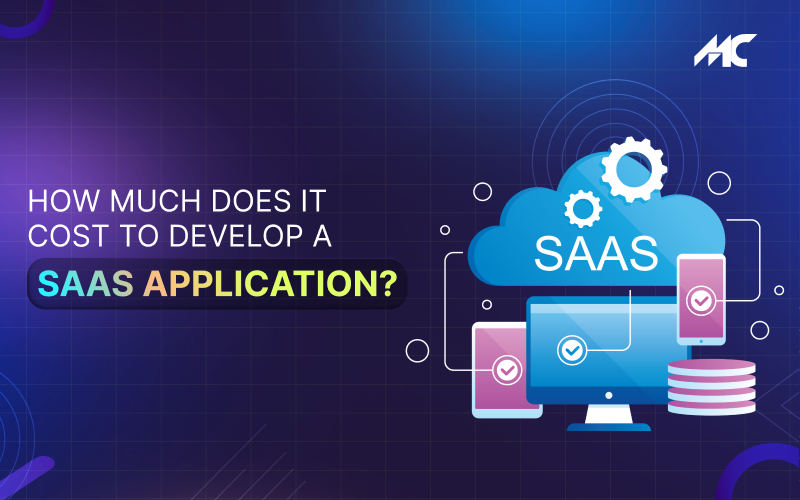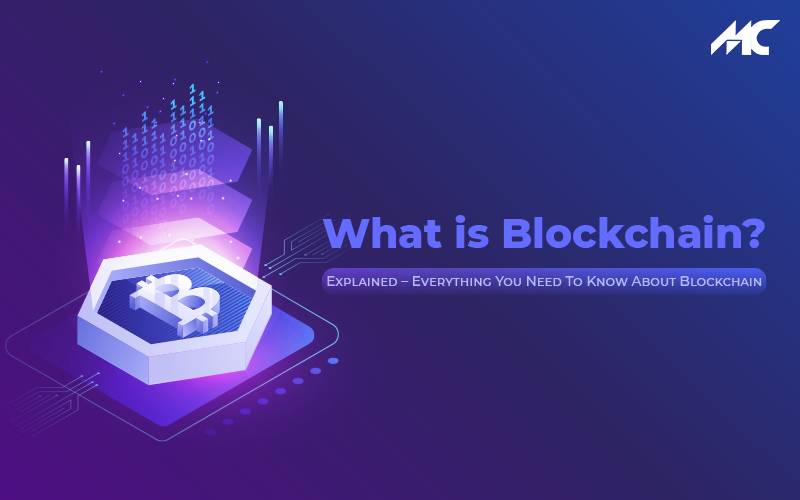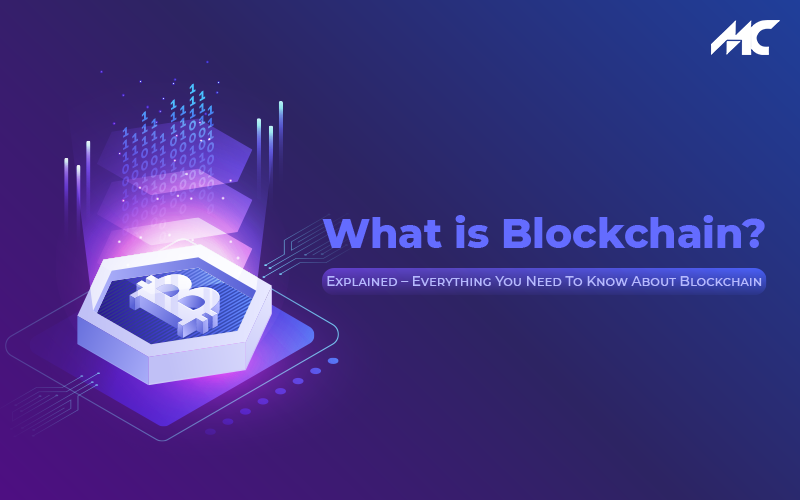What is Blockchain? Explained – Everything You Need To Know About Blockchain
“The blockchain is an incorruptible digital ledger of economic transactions that can be programmed to record not just financial transactions but virtually everything of value.” – Don & Alex Tapscott, authors Blockchain Revolution (2016).
What is Blockchain?
Blockchain is a new and intuitive way to implement decentralization. In simple words, the concept of blockchain technology is based on a time-stamped series of immutable records of data that are managed and authenticated by a cluster of computers, not by a single centralized entity. For this, cryptographic principles are used to secure and bound blocks with each other.
Blockchain brings a decentralized way to maintain the ledger which is practically impossible to falsify. Moreover, it is a system of keeping records without any indulgence of a central authority. The prominent feature of this technology is that once data is inserted in blockchain, it is almost impossible to change it.
Blockchain is a shared ledger with many pages of records. Each page begins with a sort of summary on a page before it. So, if you change the record of the previous page, you also have to change summary on the current page. Since this technology does not require third-party intermediaries like bank or government to transact money, property, contracts, etc., blockchain development is on everyone’s mind.
Its Architecture
A block can be defined as a chain of blocks that contains some information and type of data that only depends on the type of blockchain. The first block in a blockchain is called “Genesis Block”. Each block has a unique hash that can read fingerprints to identify each block and all of its content. So, any change in the block itself will cause the hash to change. In this way, block hash is very important to detect the changes in intersections. If there is any change in block hash, this can’t be considered as the same block. Each block comprises:
- Data
- Hash
- Hash of the previous block
Considering the following example, the first block is Genesis block without any predecessor and it doesn’t have any previous hash code. On one side, Block2 contains the hash of block 1 while block 3 contains the hash of block 2.
Assuming if someone wants to tamper the information stored in block 2, a hash of block 2 will also be changed and block 3 won’t have the new hash code of block 2. As per this proof of work, tampered block 2 will be considered as an invalid block.
Core Components
We need to understand the core components of this technology to progress the implementation of a block.
- Node: Nodes are users or computers involved in the blockchain.
- Block: Blocks are data structures meant to bundle the sets of transactions that are further replicated to all nodes in the network.
- Transaction: Transactions are the smallest building blocks of a blockchain system. They contain the recipients’ address, sender address, and a value. You can easily relate the transactions to a statement of your bank account. The technology allows owners to transfer the value by digitally signing the hash produced by adding the previous transaction and the public key of the receiver. Once initiated, the transaction is publicly broadcasted to the network and all the nodes in blockchain will be marked as an independent copy of this transaction. The current known “state” is calculated by processing each transaction in order as it appears in the blockchain.
- Chain: It is a sequence of blocks defined or arranged by a specific algorithm.
- Mining: Mining is the process to create a valid block that is verified and accepted by the rest of the networks.
- Consensus: The way all these copies of a single ledger is synchronized is possible due to a consensus algorithm. The consensus mechanism ensures that whatever local copies that an individual party has, they will remain consistent with each other and is the most updated one.
Essentials of Blockchain
Distributed P2P network: Blockchain works on a peer to peer network with an IP protocol. There is no centralized node and all the nodes will equally use all the services alongside collaborating with a consensus algorithm. P2P networks are generally more secure because they do not have a single point of attack or failure as in case of a centralized network. P2P network is a foundation of the decentralized nature of it.
Consensus Algorithm: Consensus algorithm synchronizes the copies of blocks scattered across the nodes. Irrespective of the type of local copies, its mechanism ensures that they remain updated and in sync with each other. All the nodes are identical and possess the same amount of information. Some of the consensus algorithms are discussed below:
- Proof of work: By using the facts that the hashing algorithm is irreversible, this algorithm has been built on. It involves solving a computational complex puzzle to create any block in the blockchain. Here is a minor need to guess a string that produces 256-bit hash created by the SHA256 algorithm.
- Proof of Stake: In this algorithm, all the nodes hold major roles in inserting any block in the blockchain. Nodes are known as validators which earn transaction fees upon validating a block. Nodes are randomly selected for block validation. Their selection also depends upon their stake on any particular node.
- Simplified Byzantine Fault Tolerance (SBFT): Here is a basic idea that involves a single validator who bundles the proposed transactions and forms a new block. The validator is referred to as the party, given the permission-based nature of the ledger. The consensus is achieved as a result of a minimum number of other nodes in the network involved to rectify the new block.
Its Versions
1: Currency
Blockchain technology was introduced to us by “Satoshi Nakamoto” who is a genius and founder of Bitcoin i.e a peer-to-peer cash system. Bitcoin is a common example of a decentralized, peer-to-peer digital cash system built on it. Moreover, it is the first generation of this technology that only involves such forms of digital cash.
2: Smart Contracts
The blockchain 2 was introduced by a young “VitalikButerin”, who founded “Ethereum Network” and is considered as a second revolution in the blockchain world. Blockchain Smart Contracts which are defined as the autonomous codes within the same technology are capable of executing tasks itself based on different conditions.
3: DApps or Decentralized apps
The decentralized Application system can be considered as the third generation of blockchain running on decentralized peer-to-peer networks. It works on the decentralized network as well as decentralized storage. Similar to traditional applications, Dapps can also have a frontend written in any language with the ability to make calls to its backend.
Need for Blockchain Technology
- Reliability: Blockchain ensures the identity of all the users involved in the transactions. Every new block requires the approval of all the nodes within the block chain.
- Unmodifiable Transactions: Blockchain stores all the blocks and transactions as per the consensus algorithm that ensures the immutability of every new block stored in it.
- Security: Due to the distributive nature of block chain technology, each block contains a copy of the transaction. So, if you want to change a transaction, you will have to change this entry in thousands of nodes included in the blockchain and it is impossible.
- Transparency: Blockchain becomes transparent by broadcasting all the transactions to all the nodes in a network. Furthermore, all the transactions are publicly viewable to everyone in the public block chain.
- Fraud Protection: The concept of sharing information to all the nodes ensures no loss of data and any kind of modification in transactions.
- Time-Saving: Block chain can play an important role in the quick settlement of payments and other financial transactions as it doesn’t require a lengthy and time-taking process of verification and approval of funds.
- Collaboration: The best level of collaboration is included in blockchain because all the parties validate the previous transactions and updates of a new transaction in it.
- Decentralised: With block chain, we don’t need to trust any centralised authority as it is being operated by thousands of computers more efficiently. It serves a lesser probability of a pin-point failure and censorship issues.
Wrapping it up!
Blockchain technology is not just a technique but a concept that includes deep mathematical foundations and calculations. A tremendous amount of development took place in the last decade since the date modern block chain has been evolved. Soon, we expect to see some innovation in this technology with improved performance and scalability and it will be quite challenging specifically for those involved in blockchain development. Next Step of technology depends upon its strengths, its limitations, & key factors to determine that how we need to create different architectures based on the business needs. However, the world believes that block chain and crypto both are the future of technologies and their mass adoption is predetermined.
-

 Mobilecoderz Awarded as India’s Best iPhone App Development Company by Clutch
Mobilecoderz Awarded as India’s Best iPhone App Development Company by Clutch -

 How Much Does It Cost to Develop a SaaS Application?
How Much Does It Cost to Develop a SaaS Application? -

 Mobilecoderz recognized as the Top App Development Company in Saudi Arabia by GoodFirms
Mobilecoderz recognized as the Top App Development Company in Saudi Arabia by GoodFirms










